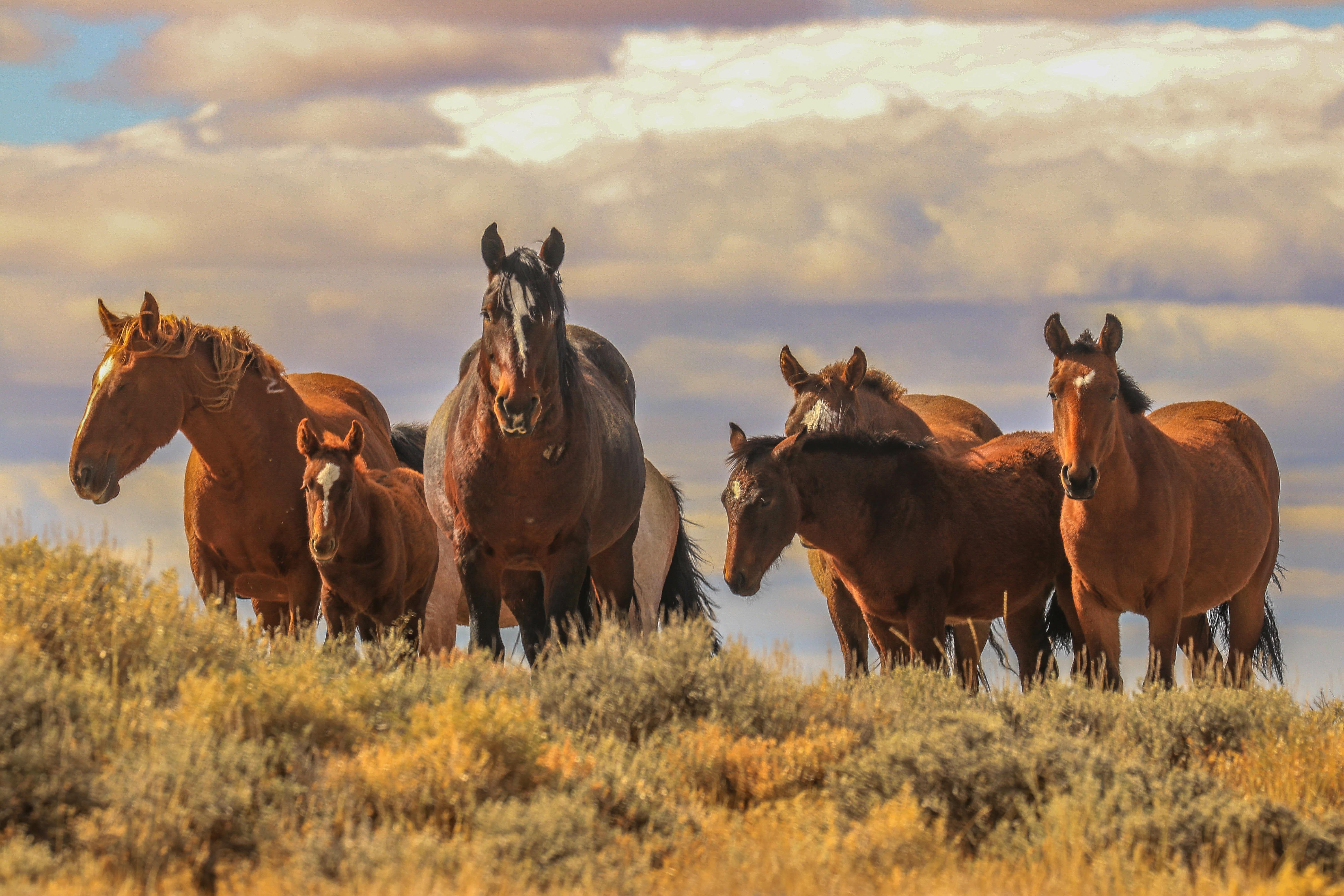Demand for Wild Horses and Burros Studied, Age, Color and Height Preferences Noted; Training Found to be Important

The number of wild horses and burros free roaming on western rangelands in the United States continues to greatly exceed the appropriate management level established by the Bureau of Land Management (BLM). In a 2019 statement, the acting head of the BLM indicated that private adoptions of wild horses and burros would be a key focus in regulating the population.
A simple tenet of economics is that markets are mechanisms to allocate resources, and of course a market consists a supply side and a demand side. Most of the focus on management of wild horse and burro herds has been on the supply side through research on population control through fertility suppression. Only a handful of studies have considered the demand side of the market.
Two recent and complementary studies conceived by Jill Stowe, PhD, professor of agricultural economics at the University of Kentucky, serve to fill that gap while assessing the feasibility of the BLM’s recent focus. The first article, co-authored with Kathryn Bender, PhD, professor of environmental economics, Allegheny College Center for Business and Economics, and published in Sustainability (2019), investigates which characteristics of wild horses are most desired by adopters. The second article, co-authored with recent UK Equine Science and Management undergraduate student Hannah White, is currently under review for publication and explores characteristics of people who are most likely to adopt wild horses.
Bender and Stowe (2019) use data compiled from BLM online auctions held November 2012 through November 2014. The authors developed two models: one capable of predicting the likelihood of adoption, and the other estimating the adopters’ willingness-to-pay for various horse characteristics. Results from this study suggest that a number of characteristics influenced the probability that a wild horse was adopted through an online auction. Older horses were less likely to be adopted, as were those that were born in captivity and had spent a longer time in captivity. Adopters seemed to have color preferences, with the less common coat patterns such as pinto, palomino, etc., increasing the likelihood of adoption relative to the more common base coat colors like bay and chestnut. Horses that had received some halter training as well as training under saddle were more likely to be adopted. Interestingly, however, while a number of horse characteristics increased the likelihood of adoption, adopters were rarely willing to pay extra for those characteristics. Among horses at least 3 years of age, adopters are willing to pay almost 40% more for a pinto and about 20% more for a dilute as compared to a solid base coat color. Adopters were willing to pay at least 55% more for a wild horse that had received training under saddle but nearly 20% less for a horse that was born in captivity. Taken together, the results inform BLM herd management strategies in terms of the horses they select for adoption and the training provide to the horses.
Stowe and White (2021) begins with the initial assumption that current and previous horse owners in the U.S. represent the group most likely to be able to adopt a wild horse, and a survey was distributed through social media channels to this group. Out of nearly 2,250 usable responses, less than 10% had never adopted a wild horse and would never consider doing so in the future. The remaining respondents were asked to identify which characteristics were important to them in selecting a wild horse and answer questions regarding the most they would be willing to pay for a completely unhandled horse, one that had received halter training, and one that had received training under saddle. Using those responses, we then estimated adopter characteristics that serve as determinants of willingness to pay. Previous adopters were willing to pay more than those who had never adopted before, and willingness to pay was typically monotonically decreasing across age groups. Those who own five or fewer horses were also willing to pay more. None of the other adopter characteristics, such as age, gender, income or state of residence influenced willingness to pay. The average respondent in the sample was willing to pay about $125 for his/her “ideal” untrained wild horse, just under $300 for a horse that had received basic halter training and close to $415 for a horse that had been started under saddle.
Results from these papers can be used to inform BLM’s management strategies. Knowing that adopters have age, color and height preferences, BLM can select animals to be made available for adoption that are more likely to find homes. BLM can target younger horse owners with its marketing efforts. And both papers suggest that training, especially training under saddle, is a key component to private adoptions. We recognize that implementing a large-scale training program is not trivial. Training any horse, especially a wild horse, is expensive and risky, and many respondents indicated that they didn’t have the time or expertise to safely train a wild horse. And while both studies suggest adopters are willing to pay more for horses trained under saddle, it is noted that their willingness to pay falls short of actual market rates for training. Still, the BLM should carefully consider the tradeoff between the cost of training and keeping the horse for the duration of its life. Finally, continual efforts to educate horse owners about adopting a wild horse from the BLM will be important, as more than half of respondents reported little to no familiarity with the process.
Jill Stowe, PhD, is a professor of agricultural economics at the University of Kentucky.
